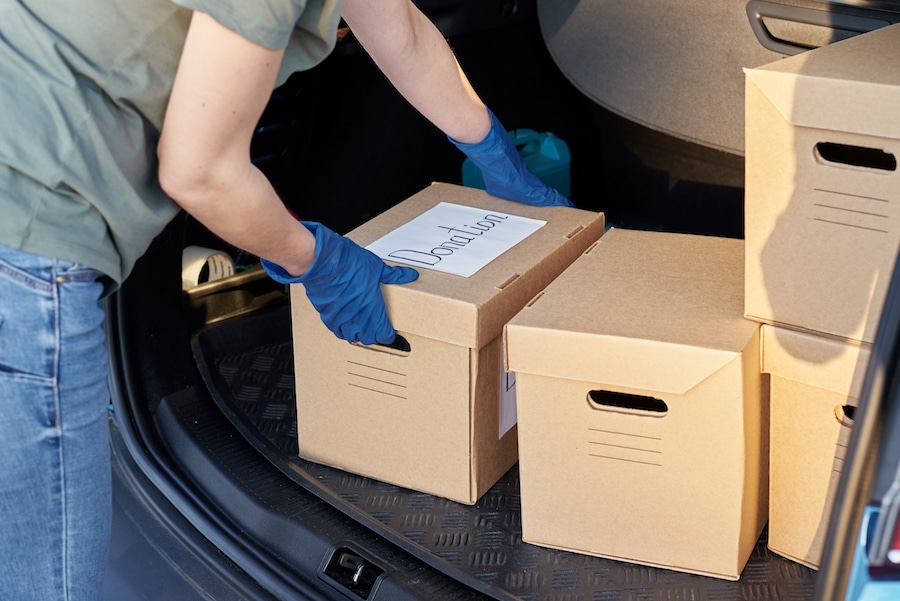Introduction
Charitable giving has long been a cornerstone of corporate social responsibility. For businesses, donating inventory to charitable organizations offers a way to contribute to the community while potentially receiving valuable tax benefits. However, the process of making business inventory charitable donations involves more than just goodwill. It requires careful planning, documentation, and understanding of tax implications to ensure compliance with regulations and to maximize the benefits of the donation.
This article explores the concept of charitable donations of business inventory, the rules and regulations surrounding them, their benefits and challenges, and best practices for implementation. Whether you are a small business owner or a financial manager at a large corporation, this guide will help you navigate the complexities of donating inventory effectively and responsibly.
What Is Business Inventory?
Before diving into charitable donations, it’s essential to define what constitutes business inventory. Inventory typically includes:
-
Finished goods held for sale
-
Raw materials used to produce goods
-
Work-in-progress goods being manufactured
-
Supplies or products kept on hand for sale or distribution
Businesses in retail, wholesale, and manufacturing often have significant inventories. Over time, some of this inventory may become obsolete, overstocked, seasonal, or unsellable. In such cases, rather than discarding or liquidating excess stock, donating it to a qualified charity can be a strategic decision.
What Are Charitable Donations of Inventory?
Charitable donations of inventory occur when a business voluntarily provides goods or products from its inventory to a qualifying charitable organization without expecting payment in return. These donations must serve a charitable purpose and be accepted by a recognized nonprofit, such as:
-
501(c)(3) organizations in the United States
-
Educational institutions
-
Religious groups
-
Charities operating under international law in other countries
Examples of inventory donations include:
-
A clothing retailer donating unsold apparel to a homeless shelter
-
A food distributor donating surplus food to a food bank
-
A pharmaceutical company donating medicine to a public health organization
Why Businesses Donate Inventory
1. Community Impact
Donating goods helps support communities in need, especially during crises like natural disasters, pandemics, or economic downturns. It enhances a company’s reputation and demonstrates corporate responsibility.
2. Tax Benefits
In many jurisdictions, inventory donations to qualifying nonprofits are tax-deductible. This can reduce a company’s taxable income and potentially lower its overall tax liability.
3. Cost Savings
Donating slow-moving or obsolete inventory can reduce storage, handling, and disposal costs. In some cases, liquidation may not cover logistics expenses, making donation a more cost-effective option.
4. Brand Image and PR
Charitable giving positively influences brand perception. Consumers are increasingly supportive of companies that give back to society. Donating inventory can become part of a company’s public relations and marketing strategy.
5. Regulatory Compliance and Environmental Responsibility
Rather than dumping inventory into landfills, donation aligns with environmental sustainability goals and helps businesses comply with waste management regulations.
Tax Considerations for Inventory Donations
While donating inventory can lead to tax advantages, it must be done correctly to qualify. In the United States, the Internal Revenue Code (IRC) outlines specific provisions regarding charitable deductions for donated inventory.
1. Qualified Organizations
To receive tax benefits, donations must be made to IRS-recognized 501(c)(3) charitable organizations. Donations to individuals or unqualified entities do not qualify.
2. Fair Market Value (FMV)
Businesses may deduct the lesser of:
-
The item’s fair market value, or
-
The cost basis (usually the purchase or manufacturing cost)
However, C corporations may qualify for an enhanced deduction, which is generally equal to:
Cost Basis + 50% of the difference between FMV and Cost Basis, capped at twice the cost basis.
Example:
-
FMV: $100
-
Cost Basis: $40
-
Enhanced Deduction = $40 + 0.5($100 – $40) = $70
This deduction applies only if:
-
The donation is for the care of the ill, needy, or infants
-
The charity uses the donation for a qualified purpose and does not resell it
-
Proper documentation is obtained
3. Documentation Requirements
Businesses must maintain records that include:
-
Description and quantity of items donated
-
Date and place of donation
-
Donee’s name and address
-
Method used to determine FMV
-
Appraisal (for high-value items, typically over $5,000)
4. Limits on Deductions
There are annual limits to the deduction amount:
-
C corporations: Generally limited to 10% of taxable income
-
Sole proprietors and pass-through entities: Deduction reported on individual returns, typically subject to 60% AGI limit for cash and 30% for property
Excess deductions can sometimes be carried forward for up to five years.
Regulatory and Legal Considerations
Besides tax rules, other regulations and legal standards affect how inventory donations must be managed.
1. Product Safety and Liability
Donated products must meet all safety standards. If defective products harm recipients, the donor may be held liable unless protected by laws such as the Good Samaritan Food Donation Act for food donations.
2. Labeling and Expiration
Perishable goods must be donated before expiration. Medicines, cosmetics, and foods often have labeling requirements to prevent misuse or misrepresentation.
3. Customs and International Donations
For international inventory donations, companies must comply with export laws, customs declarations, and potential import restrictions in the recipient country.
Challenges of Inventory Donations
Though beneficial, inventory donations can come with hurdles:
1. Logistical Complexity
Storage, transportation, and distribution of goods to charities may require significant coordination, especially if donations are large or perishable.
2. Valuation and Appraisal
Accurately determining FMV can be difficult, especially for unique or aged inventory. Inaccurate valuation may lead to audit risks.
3. Legal Risk and Compliance
Liability concerns, especially for food or medical donations, can deter businesses without adequate legal protection or insurance.
4. Documentation Burden
Maintaining detailed records and receipts takes time and administrative effort, particularly when donations are frequent or large in volume.
5. Compatibility with Accounting Practices
Removing inventory from books impacts financial statements. Companies must coordinate with accounting teams to ensure accurate representation and compliance with GAAP or other accounting standards.
Best Practices for Donating Business Inventory
To maximize benefits and ensure compliance, businesses should adopt structured processes:
1. Establish a Donation Policy
Create formal guidelines that include:
-
Types of inventory eligible for donation
-
List of preferred charities
-
Approval and authorization processes
-
Documentation and record-keeping standards
2. Partner with Reputable Charities
Build relationships with nonprofit partners that:
-
Have logistical capabilities
-
Provide acknowledgments or receipts
-
Comply with relevant use-restriction requirements
3. Document Every Step
Maintain records of:
-
Inventory type, value, and condition
-
Donation purpose and recipient
-
Shipping or delivery confirmations
-
Tax filings and correspondence with the IRS
4. Train Staff and Assign Roles
Educate employees on donation procedures and assign responsibilities across departments (logistics, legal, finance, operations).
5. Leverage Technology
Use inventory management and donation-tracking software to:
-
Identify surplus inventory in real-time
-
Automate documentation and reports
-
Ensure traceability and transparency
6. Work With Tax Advisors
Collaborate with accountants or tax professionals to:
-
Maximize deductions
-
Avoid audit triggers
-
Stay up-to-date with changing laws
Examples of Commonly Donated Inventory
Businesses across industries engage in inventory donations. Common items include:
-
Retail: Clothing, shoes, toys, accessories
-
Food and Beverage: Packaged foods, beverages, ingredients
-
Pharmaceuticals: Medicines, hygiene products
-
Tech and Electronics: Computers, mobile devices, peripherals
-
Books and Education Supplies: Textbooks, stationery
-
Manufacturing: Tools, parts, raw materials
Industry-Specific Considerations
1. Retail Industry
Retailers often deal with returned, unsold, or seasonal merchandise. Donating these goods to organizations like shelters or community centers helps manage overstock and gain tax benefits.
2. Food and Beverage Industry
Thanks to the Bill Emerson Good Samaritan Food Donation Act, food businesses have legal protection when donating in good faith. Many food banks rely heavily on such donations.
3. Pharmaceutical and Healthcare Sector
Stringent safety and expiration standards apply. Nonetheless, donations can significantly aid underserved regions, especially during public health emergencies.
4. Education and Publishing
Schools and nonprofit education centers benefit from donations of books, supplies, and educational materials. Donors should ensure materials are current and appropriate.
International Inventory Donations
When donating goods across borders:
-
Partner with international nonprofits with local operations
-
Understand and comply with both donor and recipient country laws
-
Account for international shipping, tariffs, customs, and import taxes
-
Use internationally recognized charitable organizations like UNICEF, WHO, or Red Cross for seamless coordination
Tracking the Impact of Donations
It’s important not just to donate but to understand how those donations are used. Consider:
-
Requesting feedback or success stories from recipient organizations
-
Visiting beneficiary communities when possible
-
Reporting social impact in sustainability or CSR reports
-
Encouraging employee volunteering to complement inventory donations
Measuring impact enhances accountability, strengthens donor-recipient relationships, and supports future giving decisions.
Alternatives to Charitable Donations
Sometimes donation may not be the optimal strategy. Alternatives include:
-
Liquidation: Selling to secondary markets at a reduced price
-
Recycling: For damaged or expired goods
-
Repackaging: Rebranding or modifying items for different markets
-
Employee Giveaways: Providing excess inventory as perks
Each alternative has its pros and cons, depending on the type of inventory, company goals, and available resources.
The Role of Third-Party Donation Platforms
Several nonprofit and for-profit intermediaries help facilitate business donations by:
-
Matching businesses with charities
-
Managing logistics and distribution
-
Handling paperwork and acknowledgments
-
Providing impact analytics
Examples include Good360, Feeding America, and GlobalGiving. These platforms streamline the donation process and ensure compliance.
Conclusion
Charitable donations of business inventory are a win-win strategy: businesses benefit from tax deductions, cost savings, and enhanced public image, while nonprofit organizations gain access to valuable resources they might not otherwise afford. However, successful implementation requires attention to detail, legal compliance, and strategic partnerships.
By establishing clear policies, maintaining thorough documentation, and working with reputable partners, businesses can turn excess inventory into powerful tools for social good. As consumer expectations around corporate social responsibility continue to rise, inventory donation stands out as a practical and meaningful way to give back to the community while supporting long-term business sustainability.


